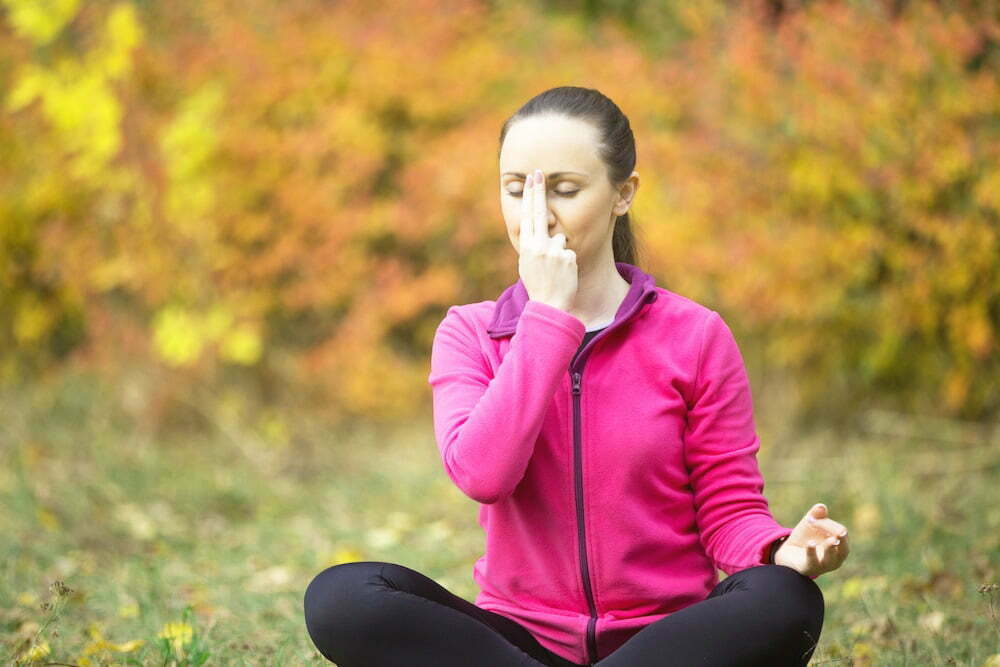Anxiety is a common struggle that many people face in today’s fast-paced world. The constant demands of work, social obligations, and personal responsibilities can often leave us feeling overwhelmed and stressed. However, there are simple yet effective breathing techniques that can help alleviate anxiety and manage stress in the present moment. In this article, we will explore some of these techniques and how they can be incorporated into your daily routine.
The Power of Breathing
Before delving into specific breathing techniques, it’s important to understand the power of our breath. Breathing is a natural bodily function, but it can also be consciously controlled to induce relaxation and calmness. By focusing on our breath, we can bring our attention to the present moment and create a sense of inner peace.
Technique 1: Diaphragmatic Breathing
Diaphragmatic breathing, also known as belly breathing, is a technique that engages the diaphragm muscle, promoting deep and slow breaths. To practice diaphragmatic breathing, follow these steps:
- Find a quiet and comfortable space to sit or lie down.
- Place one hand on your chest and the other on your abdomen.
- Take a slow, deep breath in through your nose, allowing your abdomen to rise. Ensure your chest remains still.
- Exhale slowly through your mouth, noticing your abdomen falling.
- Repeat this process for several minutes, focusing on the sensation of your breath.
Diaphragmatic breathing helps activate the body’s relaxation response, reducing anxiety and stress levels.
Technique 2: Box Breathing
Box breathing, also referred to as square breathing, is a technique that involves equalizing the length of each breath. This technique brings balance and calmness to the body and mind. Here’s how you can practice box breathing:
- Sit comfortably with your back straight.
- Inhale slowly through your nose for a count of four.
- Hold your breath for a count of four.
- Exhale slowly through your mouth for a count of four.
- Hold your breath again for a count of four.
- Repeat this cycle several times, focusing on the rhythmic pattern of your breath.
Box breathing helps regulate the autonomic nervous system, promoting relaxation and reducing anxiety symptoms.
Technique 3: Progressive Muscle Relaxation
Progressive Muscle Relaxation (PMR) combines deep breathing with muscle relaxation techniques, helping to release tension in the body. Here’s how you can practice PMR:
- Find a comfortable position and take a few deep breaths.
- Start by tensing the muscles in your forehead for a few seconds, then release the tension while exhaling.
- Move down to your jaw, shoulders, arms, hands, and so on, tensing and releasing each muscle group.
- As you release tension with each exhale, visualize the stress leaving your body.
PMR promotes a sense of physical relaxation, which can have a positive impact on your mental well-being, reducing anxiety and stress.
Technique 4: 4-7-8 Breathing
4-7-8 breathing is a technique that aims to calm the mind and relax the body. It involves a specific pattern of breaths that can be practiced anywhere, anytime. Here’s how you can practice 4-7-8 breathing:
- Sit comfortably or lie down, ensuring your spine is straight.
- Place the tip of your tongue against the roof of your mouth, just behind your front teeth.
- Slightly exhale through your mouth.
- Inhale quietly through your nose to a mental count of four.
- Hold your breath for a count of seven.
- Exhale forcefully through your mouth to a count of eight.
- Repeat this cycle three more times, maintaining the same breath counts.
4-7-8 breathing activates the body’s relaxation response, promoting a sense of calmness and reducing anxiety.
Incorporating Breathing Techniques into Your Routine
Now that you’re familiar with these breathing techniques, it’s essential to incorporate them into your daily routine. Here are some tips to help you get started:
- Set aside dedicated time: Find a specific time each day to practice breathing techniques, whether it’s in the morning, during your lunch break, or before bed.
- Create a peaceful environment: Find a quiet and comfortable space where you can fully immerse yourself in the practice.
- Practice regularly: Consistency is key. Aim to practice these techniques daily to experience the full benefits.
- Combine with mindfulness: Combine breathing techniques with mindfulness meditation for enhanced relaxation and stress relief.
Remember, managing anxiety and stress is an ongoing process, and different techniques work for different individuals. Find what resonates with you and incorporate it into your routine as a tool for managing anxiety and finding calm in the present moment.
In conclusion, breathing techniques have the power to alleviate anxiety and manage stress by bringing our attention to the present moment. Through diaphragmatic breathing, box breathing, progressive muscle relaxation, and 4-7-8 breathing, we can tap into the power of our breath to induce relaxation and reduce anxiety symptoms. By incorporating these techniques into our daily routine, we can cultivate a greater sense of calmness and well-being in our lives.
Also Read: Stress & Resilience – Build resilience and learn to cope with stress in a healthy way.
Discover more from NoseyPepper
Subscribe to get the latest posts sent to your email.










Recent Comments